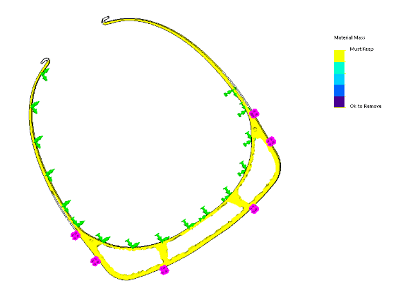Human ingenuity, and hobbyists — that’s what the world needs right now, aside from the medical professionals who are on the front lines of the coronavirus pandemic.
As hospitals around the world rush to take stock of the medical equipment they have at their disposal, engineers and engineering companies have been finding ways that they can contribute to the fight against COVID-19.
It turns out that the hobbyist engineer who has a 3D printer at home could potentially be an integral player in manufacturing items that can help secure public health. Kasey Martin, our in-house developer at the Engineering Institute of Technology (EIT), is putting his 3D printers to good work.
He currently works in the Philippines, which has put contingency plans into place to mitigate the spread of coronavirus. They are now in enhanced community quarantine, meaning the government has imposed a strict home lockdown with only essential movements for necessities and health services permitted.
“There has been an increase in checkpoints and uniformed personnel on the streets enforcing the quarantine. There has also been a rise in patients admitted to our health facilities. There is a great demand for any form of personal protective equipment (PPE),” he said.
Kasey had procured some 3D printers (the AnyCubic i3 Mega, the Creality CR-10, and Creality CR-2020) in a previous project that saw him printing parts for a weather station. When he heard that there was a shortage of PPE for the health workers and other essential workers, he jumped into action. He frantically searched for 3D printing templates for face shield frames.
One of the first considerations when printing a face shield frames is what filament to use and how fast it can be printed. Another factor is how safe the filament is for human use.
He explained, “For faster rollouts and ease of prints (easiest of all filaments types to use), we use standard PLA filaments. PLA stands for polylactic acid that is a bioplastic that usually comes from cornstarch as its raw material. It does not have any fumes (as opposed to ABS plastic) when printing, so it is safe for printing 24/7 in an enclosed office during this crisis.”
They then accessed open source templates that could be plugged into the 3D printers’ software.
“This is where the fun story starts. While thinking of a way we can help our front liners with alternative PPEs, we came across a Facebook group of 3D printing hobbyists. They were calling for help in 3D printing face shield frames that could be fitted with acetate sheets.”
“These face shields would then be given to front liners in the field and health centers nationwide. They did mention that, at first, the model required 3 hours to print. But the community also chipped in and gave them more optimal 3D printer profiles that made the frame print in a little over an hour!”
 The frame before the optimization.
The frame before the optimization.
 The frame after optimization.
The frame after optimization.
The crowdsourcing nature and the refining process has led to a much better-printed frame and enabled the printers to print quicker. The first iteration of the frame proved unsafe to use in a situation involving a COVID-19 patient.
To make a safer frame, he utilized a manufacturing methodology he learned from a mechanical engineer friend of his: topology optimization. He explained:
“Topology optimization mathematically optimizes your material layout based on certain constraints you put into it, like material load, for example.”
After optimizing the design and sticking to the directions of what would be safest to prevent essential health professionals from getting COVID-19, they produced a much safer frame.
The benefit of the new design was that a pair of frames could be printed at once, on a 200x200mm print bed. They posted their findings to social media and got positive feedback from friends in the medical field. Kasey and his team simply put a 0.52 mm ‘roofing’ on the frame that, if worn, would prevent any dangerous droplets from entering the shield.
The team managed to get a pair of frames printed in 40 minutes. Kasey has been sleeping over in the office to ensure that they produce as many frames as possible.
“We can produce about 50-60 face shield frames per day. We do most of our printing as fast as we can during the daytime, starting new prints every 1.5 hours. At nighttime, we slow down a bit and schedule prints every 3 hours so that we don’t mess with our sleep too much. Sleep is essential during the crisis. We can’t help other people if we get sick as well.”
Kasey says that other hobbyists can get involved in creating quality PPE equipment for health officials. Developing nations are specifically seeking assistance from the public.
“We have shared our modified design on Thingiverse so everyone who wants to contribute can freely download and get their printers to work. We are also in the works of forming an alliance of 3D printing hubs that should help cater to the number of requests we’ve been getting from various groups requesting these face shields.”
You can find Kasey’s design here.
